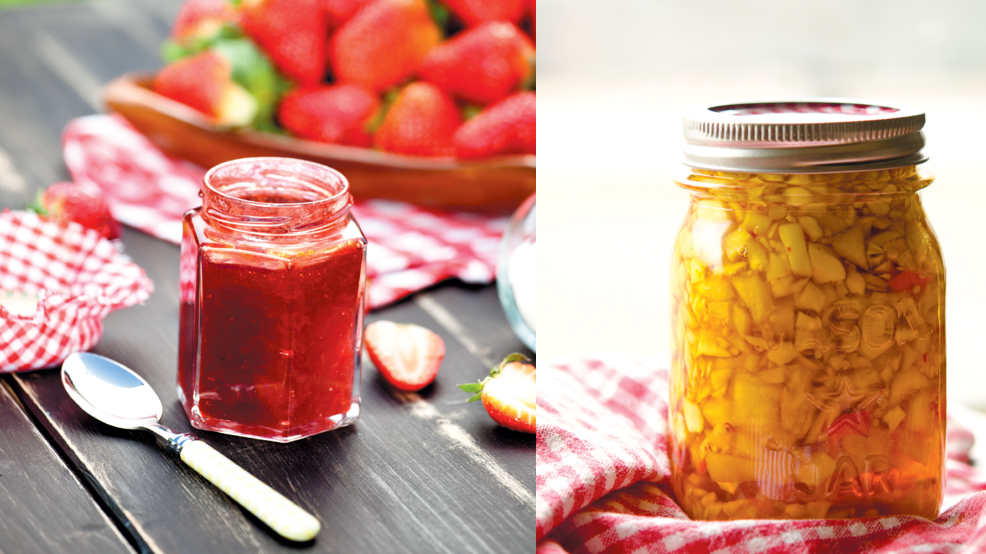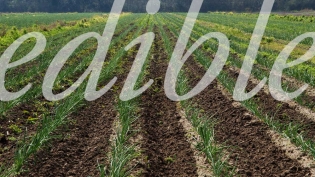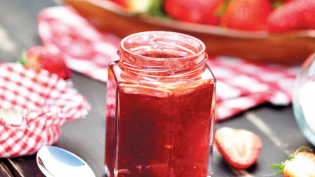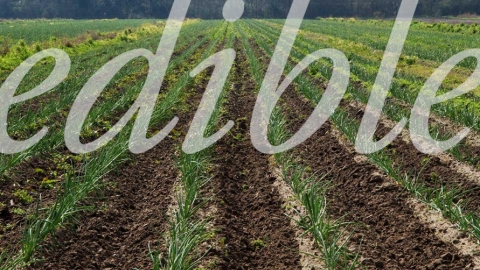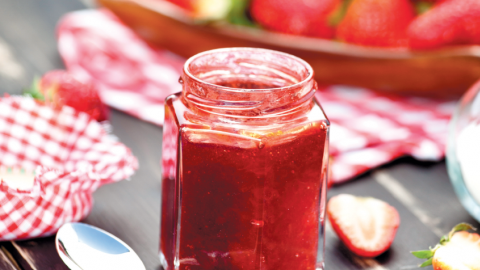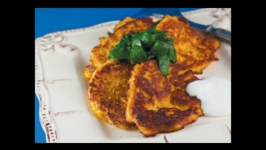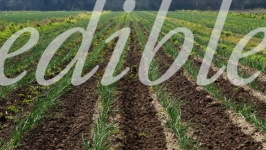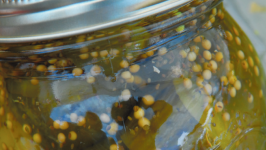Putting Up Pickles And Preserves
Many people take up canning to preserve the bounty of a backyard garden or a farmers' market in the summertime. Others want to put up fruits and vegetables in season to enjoy year-round. Some take up the craft to continue their grandmothers' legacies.
I reasoned that canning was in my genes. My late grandmother, Anna Weigl, was a prolific canner, as many women were who lived through the Great Depression. Among her most prized canned goods was her pear syrup made with pear skins and lemon rind. In 1998, when we cleaned out my parents' house before they downsized, we found dozens of jars of her pickles and preserves labeled with her titled script in the back of my parents' pantry. She had died 13 years earlier and our family had been unable to eat through everything she had given us over the years.
I became a seasonal canner. During the warm rainy days of spring, I turned plump strawberries into ruby preserves. In the sticky heat of summer, I put up peach butter and yellow squash pickles. By Labor Day, I stalked my neighbors' fig trees for fruit to turn into preserves. And during the winter, I dug up Jerusalem artichokes in my backyard to make a bright yellow relish.
I have to admit, I was just as intimidated as anyone when I started canning – I feared that my jellies wouldn't set, that my jams would spoil, that my jars of pickles would contain toxins that cause botulism – but if I can do it, so can you.
Canning is no different than cooking. Just like you wouldn't attempt beef Wellington if you've never cooked a steak, it's best to start canning with refrigerator pickles and freezer jams, then move on to the beginner's go-to recipes of strawberry jam and peach preserves, and on to more complicated recipes from there. Along the way, you'll find cookbook authors you trust. For me, it was Jean Anderson, Matt and Ted Lee, Deborah Madison, Linda Ziedrich, and Eugenia Bone. As you become more proficient at the art of canning and understand the science behind it, you'll gain the confidence to tweak a recipe. I don't change the amounts of acid or sugar in a recipe since those are essential to safe preservation, but I'll tweak the type of pepper or onion, increase the dill, or adjust the seasonings. With practice, I became a confident canner – and so will you.
Somewhere along my canning adventure I realized that if I put up enough canned goods during the year I would never be empty handed when I needed a gift. I now stock jars of pickles to give as hostess gifts. I can pull together a basket of preserves and a good loaf of bread as a welcome home package for a neighbor's new baby. And I have tons of canned treats to give to neighbors, friends and coworkers during the holidays.
Now if I could only remember birthdays!
Try These Recipes:
Soft Refrigerator Honeysuckle Jelly
Spicy And Sour Refrigerator Pickles
Resources:
These two websites are invaluable:
National Center for Home Food Preservation: nchfp.uga.edu/how/can_home.html
Ball's Fresh Preserving website: www.freshpreserving.com/getting-started.aspx
Books I could not live without:
Ball Complete Book of Home Preserving, by Judi Kingry and Lauren Devine (Robert Rose, 2006).
Jean Anderson's Preserving Guide: How to Pickle and Preserve, Can and Freeze, Dry and Store Vegetables and Fruits, (UNC Press, 2013)
The Joy of Pickling and The Joy of Jams, Jellies and Other Sweet Preserves, by Linda Ziedrich (Harvard Common Press, 1998 and 2009, respectively.)
A few favorite blogs devoted to canning and preserving foods: www.foodinjars.com, wellpreserved.ca, and www.punkdomestics.com.
Best places to find canning supplies year-round: Wal-Mart, Ace Hardware, Food Lion, and sometimes Big Lots.


